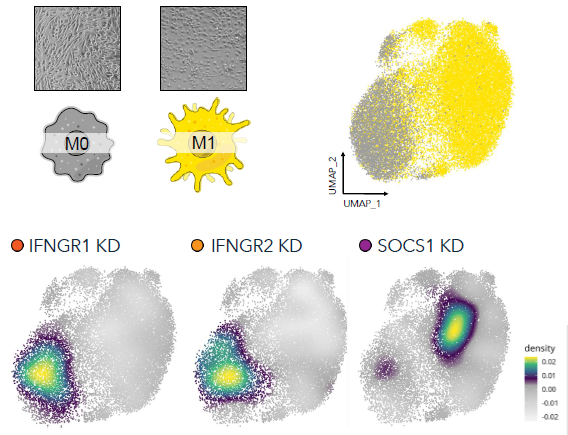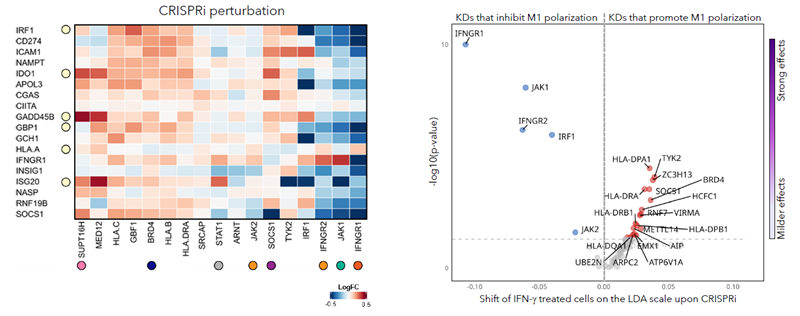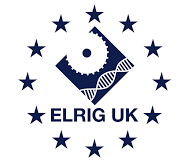This article and associated images are based on a poster originally authored by Daniela Flehberger, Sofia Buianova, Emma Langguth, Johanna Irnstorfer, Stefanie Fellinger, Henrik Schmidt, Adam Krejci, Tilmann Buerckstuemmer, Anke Loregger, Lukas Badertscher and Sumit Pawar and presented at ELRIG Drug Discovery 2025 in affiliation with Myllia Biotechnology GmbH.
This poster is being hosted on this website in its raw form, without modifications. It has not undergone peer review but has been reviewed to meet AZoNetwork's editorial quality standards. The information contained is for informational purposes only and should not be considered validated by independent peer assessment.

About Myllia’s VISTA™ platform
Macrophages and dendritic cells are central players in the innate immune system. Their dysregulation is implicated in a wide range of diseases, including autoimmunity, inflammation, cancer, and infectious diseases.
However, novel drug target identification in these cells has been difficult because these cells were - until now - refractory to high-content CRISPR screening approaches. Myllia has solved this problem, developing the Versatile Integrated Screening for Target Analysis – VISTA™ platform, enabling CRISPR screens in primary human myeloid cells.
The platform links CRISPR perturbation to transcriptomic responses, thus providing high-content functional readouts of novel gene targets involved in regulating many processes, including the tumor-immune interface relevant for immuno-oncology.
Here, Myllia presents a pooled CRISPR screen to dissect IFN-γ signaling in monocyte-derived macrophages (MDMs) and dendritic cells (MDCs). Their platform, therefore, enables large-scale CRISPR screens with complex readouts to support drug discovery campaigns.
1. The VISTA™ platform

Image Credit: Image courtesy of Daniela Flehberger et al., in partnership with ELRIG (UK) Ltd.
2. Macrophage polarization mechanisms

Image Credit: Image courtesy of Daniela Flehberger et al., in partnership with ELRIG (UK) Ltd.
3. CRISPRi screens in macrophages

Image Credit: Image courtesy of Daniela Flehberger et al., in partnership with ELRIG (UK) Ltd.
4. Polarization states resolved by scRNA-Seq

Image Credit: Image courtesy of Daniela Flehberger et al., in partnership with ELRIG (UK) Ltd.
5. VISTA™ identifies key macrophage regulators and signatures

Image Credit: Image courtesy of Daniela Flehberger et al., in partnership with ELRIG (UK) Ltd.
6. Perturbations affecting IFN-γ signaling

Image Credit: Image courtesy of Daniela Flehberger et al., in partnership with ELRIG (UK) Ltd.
Conclusions and outlook
- Five positive and 20 negative regulators were identified that modulate M1 polarization via IFN-γ signaling.
- The VISTA™ platform enables pooled CRISPR screens combined with single-cell RNA-Seq in various primary human cell types, including macrophages, dendritic cells, and T cells.
- Key features of Myllia's VISTA™ platform include:
- Unbiased drug target discovery
- Target identification in blood-derived primary human cells
- Targets with a higher chance of translating in vivo.
Myllia is looking for a strategic partner to initiate drug target discovery programs across several disease areas in primary human macrophages and dendritic cells, incl. autoimmune disease, inflammation, and oncology.
About Myllia Biotechnology GmbH
Myllia Biotechnology GmbH employs CROP-seq (Datlinger et al., Nature Methods) to map the effects of genetic perturbations on single-cell transcriptomes, establishing a robust framework for high-content CRISPR screening. This CRISPR-based, high-throughput approach is used to identify novel drug targets, reveal mechanisms of drug action, and explore genetic variants linked to disease risk.
About ELRIG (UK) Ltd.
The European Laboratory Research & Innovation Group (ELRIG) is a leading European not-for-profit organization that exists to provide outstanding scientific content to the life science community. The foundation of the organization is based on the use and application of automation, robotics, and instrumentation in life science laboratories, but over time, we have evolved to respond to the needs of biopharma by developing scientific programmes that focus on cutting-edge research areas that have the potential to revolutionize drug discovery.
Comprised of a global community of over 12,000 life science professionals, participating in our events, whether it be at one of our scientific conferences or one of our networking meetings, will enable any of our community to exchange information, within disciplines and across academic and biopharmaceutical organizations, on an open access basis, as all our events are free of charge to attend!
Our values
Our values are to always ensure the highest quality of content and that content will be made readily accessible to all, and that we will always be an inclusive organization, serving a diverse scientific network. In addition, ELRIG will always be a volunteer-led organization, run by and for the life sciences community, on a not-for-profit basis.
Our purpose
ELRIG is a company whose purpose is to bring the life science and drug discovery communities together to learn, share, connect, innovate and collaborate, on an open access basis. We achieve this through the provision of world class conferences, networking events, webinars and digital content.
Sponsored Content Policy: News-Medical.net publishes articles and related content that may be derived from sources where we have existing commercial relationships, provided such content adds value to the core editorial ethos of News-Medical.Net which is to educate and inform site visitors interested in medical research, science, medical devices and treatments.
Last Updated: Nov 12, 2025